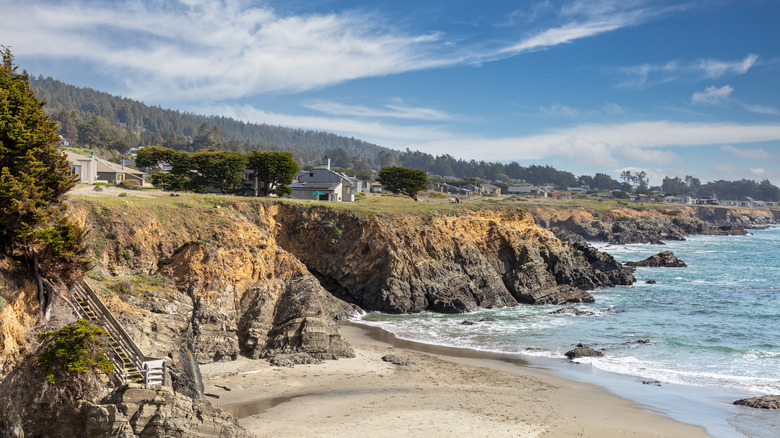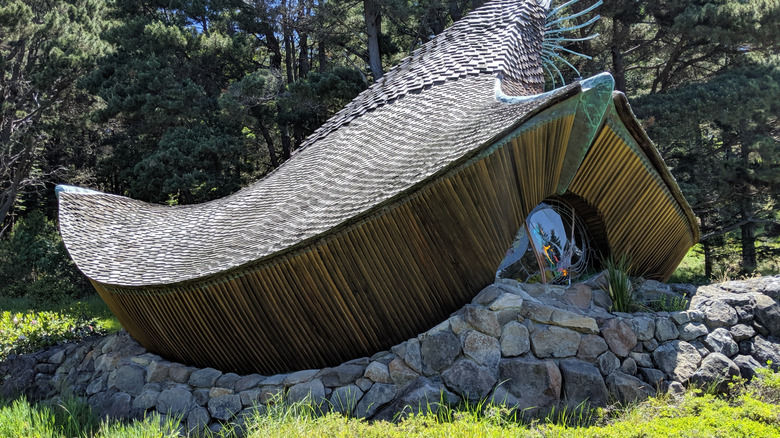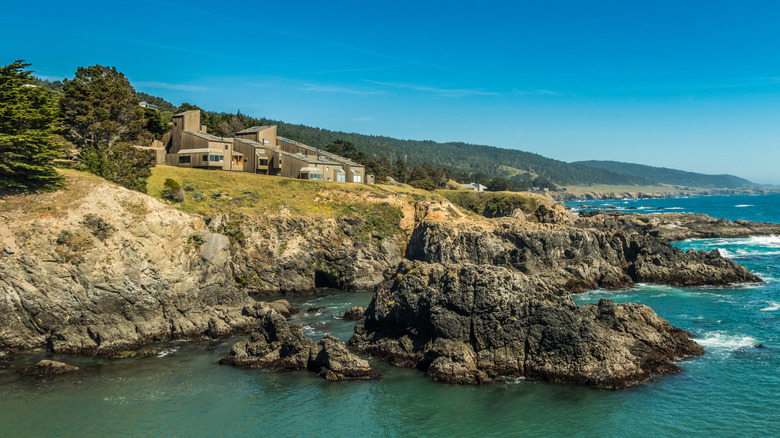A Utopian Coastal California Community Is A Wild Rustic Time Capsule From The Groovy 1960s
The California coast is home to a diverse set of idyllic seaside paradises, from Mendocino, a hidden New England-style coastal town, to a number of quintessential, Californian underrated beach towns where you can escape the touristy crowds. But none may be as unique or have such an intriguing origin story as Sea Ranch, California. As a planned community founded in the 1960s, Sea Ranch is simultaneously historic and futuristic. It is a utopian coastal California community set in a rustic time capsule of what mid-century America (or at least coastal Californian architects and creatives) believed that their future could be. The town is outfitted in buildings that represent whimsical interpretations of a Jetsons-like neighborhood but with a woodland, coastal spin that's earned it its own architectural style moniker: the Sea Ranch Style.
Today, aside from the town's timber-framed, mid-century futurisms, Sea Ranch is an extremely small, private community that serves as a tranquil and quiet getaway for those wanting to commune with nature while in a creative environment. Sea Ranch embraces a curated ruggedness for its residents and visitors, with a massive nature preserve, a number of walking trails, and breathtaking views of drop-off cliffs and plush, sandy beaches. The town is located in northern California's Sonoma County, about 100 miles from the state's Napa Valley and its famed wineries. This idealized community is a unique haven for architectural enthusiasts and lovers of the pastoral seaside.
Everything you need to know about visiting Sea Ranch, California
As the perfect coastal-rural spot to unplug from the world, Sea Ranch is home to just over 1,200 residents, and most of the homes in its tiny 10-mile radius along Highway 1 are privately owned. Sea Ranch Lodge, a newly renovated compound of guest rooms, dining spots, and shopping that is one of the oldest buildings in the town, serves as the area's singular "hotel" of sorts. However, half of the houses in Sea Ranch are rented as vacation homes, with some available on popular rental sites like Airbnb. So, while a visit to this planned community requires some research and foresight, it is accessible to the public. Those who rent a home in Sea Ranch also have access to the town's curated amenities, including a community tennis court, golf course, and private trails.
While Sea Ranch has a private airstrip, the closest commercial airport is the Charles M. Schulz-Sonoma County Airport, about 59 miles from the town. The best (and most iconic) way to reach this destination is via California's Highway 1. The town's coastal, remote location was inherent to its identity, and one of its charms nowadays is just how off-the-beaten-path it remains.
A visit to Sea Ranch would not be complete without touring one of the area's most distinctive buildings: the Sea Ranch Chapel, a nondenominational building tucked away in the woods that features unique stained-glass designs, a naturally whimsical exterior, and fairytale-like interiors. Nature lovers must also visit the Gualala Point Regional Park, a spot perched on coastal bluffs that has the perfect view of Sea Ranch.
A brief history of the Sea Ranch community
The development of Sea Ranch was the product of the commune movement, a societal fascination on how nature and community could co-exist in utopian-like harmony. When first conceived in the early 1960s by Oceanic Properties, Inc., architect Al Boeke hoped to marry modernism with the local, natural environment by designing buildings that minimized human impact on the land. The community's planning was ruled by the idea of a harmony with nature, a way to capture the wildness of the area without compromising it. Thus, everything from landscaping to supplies used in the original structures involved hyperlocal materials – landscaping was only executed with native plants, sites for buildings were chosen in accordance to the land and weather, and construction utilized local timber.
Sea Ranch's first building, aptly named "Condominium One" epitomizes this design concept, featuring a modular design aesthetic and siding from local redwood forests — essentially a re-imagined modernist seaside cabin. Condominium One was added to the National Register of Historic Places in 2005 as a significant example of regional Californian architecture. Sea Ranch would continue to develop as the brain child of modernist architects, landscape designers, artists, environmentalists, and even attorneys. Every house and community feature was designed and built in accordance to the ecological-friendly and creatively-minded founding mission.
The Sea Ranch Association still stewards this mission today, facilitating public works and preservation and conservation initiatives. Visitors and homeowners in this current era cannot, nor should they, escape the ethos of Sea Ranch's founding, understanding that time spent in this utopian town is borne from environmental respect and creative fascination.


